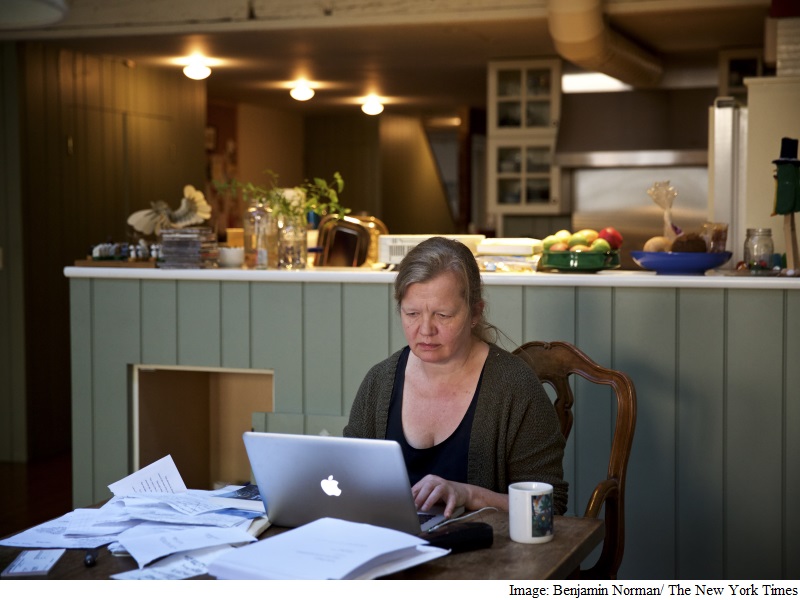- Home
- Internet
- Internet Features
- Publishers Straddle the Apple Google, App Web Divide
Publishers Straddle the Apple-Google, App-Web Divide

Consider The Atavist Magazine, an online publication run by Evan Ratliff. To attract the broadest audience possible, Ratliff said he felt pressure to do everything twice: once for the Web and once for the magazine's app. But maintaining a website and getting readers for it while also building an audience of iPhone users with an app, took time - too much time, Ratliff said. So last month, The Atavist shut down its app and decided to publish only on the Web.
"Getting someone to download an app is way harder than targeting them and sending them stories through social media," said Ratliff, co-founder of the magazine. The decision was difficult because The Atavist's app had a following, and it is "hard to give up any audience once you have it," he said. But in the end, the app's limitations were too great, he said.
The Internet was supposed to be a place where billions of potential users could be reached in one place, simply and inexpensively. But as Apple focuses on apps and Google pushes the mobile Web, businesses are grappling with a fragmenting online world.
The two tech giants' competing visions have a common denominator: money. Apple's main business is selling devices, so it favors apps that make its iPhone a must for consumers. Google makes its money showing people ads that are tailored to their Web searches, so it favors a free and open Web.
Both are such big companies that there is considerable overlap. Google also makes money selling apps and owns popular programs like Gmail and YouTube, while Apple has growing advertising and search businesses. But even those differences are tied to the vision of their core products, with some Apple search tools being most useful for searching its devices and apps, and Google's many efforts to help people navigate apps fitting into its mission to build a simple search box for anything and everything online.
The competing strategies have made it particularly tough for publishers, which straddle apps and the Web more than most mobile categories. That is because publishers tend to use apps to cater to the most loyal users and use the Web to be found by new readers. As a result, many have invested lots of time and money on a website and an app, which is a huge burden for small publishers that cannot afford a large technology staff.
That situation has been made even harder by some recent moves by Apple and Google. Last month, Apple enabled ads to be blocked on mobile websites on iPhones and iPads, which threatened to hurt publishers that relied on such ads for revenue. And next month, Google will start penalizing websites that use pop-up screens to promote their apps by placing them lower in search engine results, a move that some have called "app blocking."
At the same time, Google has many projects to make the mobile Web faster, including a publisher-focused initiative called Accelerated Mobile Pages, or AMP, which aims to ensure that news and other articles will load more quickly on the mobile Web.
"I'm not surprised that the war between them has become an issue for publishers" given that Apple and Google have pushed competing ways to make money from content for years, said Maggie Mesa, the head of publisher development at Manage.com, a company that sells ads in apps. "I'm surprised that it's taken this long."
An Apple spokeswoman said: "The App Store and apps have transformed what people do with mobile devices and have revolutionized the entire industry. Our incredible developer community has created over 1.5 million of the most innovative apps in the world, and they have earned over $33 billion (roughly Rs. 2,13,978 crores) on the App Store. Whether iOS users choose apps or the Web for enjoying content they will have a great experience."
Google said by email: "People want content to be fast, discoverable, and accessible. Both apps and the mobile Web are important to publishers and we're investing in both."
The apps-versus-web-debate seems to be a no-brainer for some websites. Apps appear to have largely defeated the mobile Web, with Americans spending about 60 percent of online time in a mobile app, about 30 percent on a desktop computer and just 9 percent in the mobile Web, according to a recent Goldman Sachs report on digital advertising.
Yet for some publishers, the cost of an app can be onerous. Publishers have to market the app, often by buying things like mobile ads that ask readers to install the app. Such costs drove The Magazine, a long-form digital magazine, out of business last year, even though it had 35,000 app subscribers at its peak in February 2013 and grossed about $750,000 (roughly Rs. 4.8 crores) over 28 months.
"It was just too hard to stand out in the noise," said Glenn Fleishman, The Magazine's founder.
By comparison, the web can seem to be an attractive option. Sites like Atavist can use social media to cut marketing costs.
"Even though there are problems with the mobile Web, I see very few publications starting with an app now," said Ratliff of Atavist. After jettisoning the app, he said he could focus more on finding ways to distribute articles through Facebook, Twitter and Reddit. "These places drive traffic," he said.
Other publications like Bike Hugger, a cycling site, are trying to serve all of the platforms. D.L. Byron, publisher of Bike Hugger, has had an app since June 2013 and a mobile site since October 2011. He said he used the shorter content he runs on the Web to encourage people to subscribe to the app. "We evolved as our audience and tech did," he said.
Byron added that he was watching carefully what Apple and Google do because either company could easily take away his ability to make money from an audience.
"We're spending more time thinking about what Google and Apple are going to do than when we were just doing desktop publishing," he said. "They can change on a dime and pull the rug out from under you, like when Google cut off news feeds and Apple decided to allow ad blocking."
Being caught in the middle is "enormously disturbing," said Ann Kjellberg, publisher of the poetry and prose journal Little Star. She could not afford to hire a technology staff to make an app, so in mid-2012, she hired 29th Street Publishing to create one. It now takes a cut of the app's subscription revenue. She later had 29th Street make a mobile website, for which it takes a percentage of the subscription revenue.
"For anybody trying to do something independent on their own, it's difficult to integrate into this technological environment," Kjellberg said. She added that companies like Google and Apple were aiming not "to support the endeavor of creative working people, but to get people addicted to their business models, their devices or interaction with a screen."
© 2015 New York Times News Service
Get your daily dose of tech news, reviews, and insights, in under 80 characters on Gadgets 360 Turbo. Connect with fellow tech lovers on our Forum. Follow us on X, Facebook, WhatsApp, Threads and Google News for instant updates. Catch all the action on our YouTube channel.
Related Stories
- Samsung Galaxy Unpacked 2025
- ChatGPT
- Redmi Note 14 Pro+
- iPhone 16
- Apple Vision Pro
- Oneplus 12
- OnePlus Nord CE 3 Lite 5G
- iPhone 13
- Xiaomi 14 Pro
- Oppo Find N3
- Tecno Spark Go (2023)
- Realme V30
- Best Phones Under 25000
- Samsung Galaxy S24 Series
- Cryptocurrency
- iQoo 12
- Samsung Galaxy S24 Ultra
- Giottus
- Samsung Galaxy Z Flip 5
- Apple 'Scary Fast'
- Housefull 5
- GoPro Hero 12 Black Review
- Invincible Season 2
- JioGlass
- HD Ready TV
- Laptop Under 50000
- Smartwatch Under 10000
- Latest Mobile Phones
- Compare Phones
- Realme P4x 5G
- OnePlus Ace 6T
- OPPO A6x 5G
- Samsung Galaxy Z TriFold
- Poco F8 Ultra
- Poco F8 Pro
- Huawei Mate 80 RS Master Edition
- Huawei Mate 80 Pro Max
- Asus ProArt P16
- MacBook Pro 14-inch (M5, 2025)
- Poco Pad M1
- Poco Pad X1
- Just Corseca Skywatch Pro
- Honor Watch X5
- Acerpure Nitro Z Series 100-inch QLED TV
- Samsung 43 Inch LED Ultra HD (4K) Smart TV (UA43UE81AFULXL)
- Asus ROG Ally
- Nintendo Switch Lite
- Haier 1.6 Ton 5 Star Inverter Split AC (HSU19G-MZAID5BN-INV)
- Haier 1.6 Ton 5 Star Inverter Split AC (HSU19G-MZAIM5BN-INV)

















